- About us»
- Net income calculator»
- Population aging»
-
- Least developed regions»
-
- Average wage
- Material need benefits
- Meal allowance
- Counties of Slovakia
- Inflation
- Living and Subsistence Minimum
- Unemployment of Czechia and Slovakia
- NACE Classification
-
- Life expectancy
- Gender differences
- Youth unemployment and NEET
- Minimum wage in EU
- Unemployment rates of different age groups
- Share of salaries on GDP
- Employment rate
- Long term unemployment
- Percentage of employees ususally working at nights
- Unemployment rate
- NEET
-
- Bratislava and surroundings
- Kopanice
- Danube river
- lower Vah river
- middle Vár river
- upper Nitra river
- lower Nitra river
- Mining cities
- Kysuce a Orava
- upper Vah river - Liptov
- Spiš cities
- upper Hron river
- Juhoslovenská kotlina
- Košice fold and Torysa river
- upper Zemplín
- lower Zemplín
- EU regions
- NUTS3 regions of Slovakia
- LAU1 dataset
-
- Projects and activities
- Inclusive growth»
- Good work
- Project SKRS
- Social system – reality and vision
-
- Education of unemployed
- Young unemployed not taking part in education
- Proposal to change the system of education funding
- Library
- News»
- Contact
Asturias – ES12
EU regions: Spain > Noroeste > Asturias
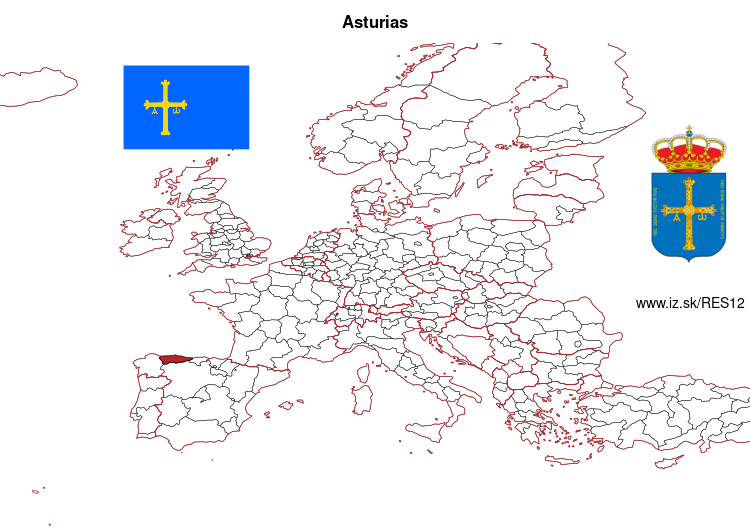
| Indicator | Period | Value |
|---|---|---|
| Life long learning | ||
| life long learning participation | 2024 | 16.3 |
| Part time jobs and flexible employment | ||
| percentage of part time workers | 2024 | 12.03 |
| percentage of part time workers, men | 2024 | 4.23 |
| percentage of part time workers, women | 2024 | 20.19 |
| Gender differences | ||
| gender gap in employment rate | 2024 | 91.74 |
| gender gap in unemployment rate | 2024 | 120.65 |
| Graduates and young people | ||
| unemployment rate of youth with elementary education | 2024 | 46 |
| NEET | 2024 | 9.6 |
| Gross domestic product | ||
| GDP per capita in PPS of EU average | 2023 | 82 |
| Employment | ||
| employment rate | 2024 | 65 |
| Social exclusion | ||
| people at risk of poverty or social exclusion | 2020 | 27.7 |
Asturias slovensky: ES12
Subregions: Province of Asturias
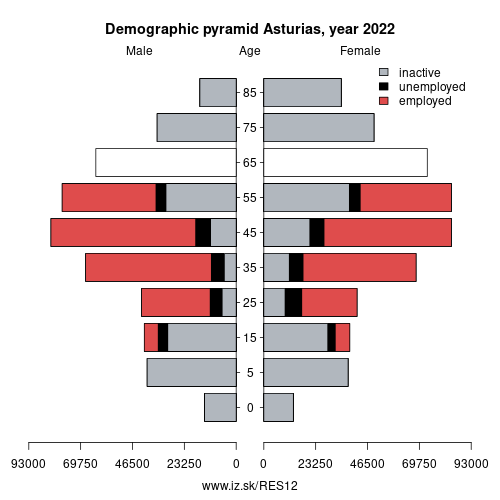
Unemployment
| Indicator | Period | Value |
|---|---|---|
| Unemployment | ||
| unemployment rate | 2024 | 10.2 |
| youth unemployment rate | 2024 | 32.9 |
| Long term unemployment | ||
| long term unemployment | 2024 | 4.5 |
| share of long term unemployed | 2024 | 44.5 |
Demographics
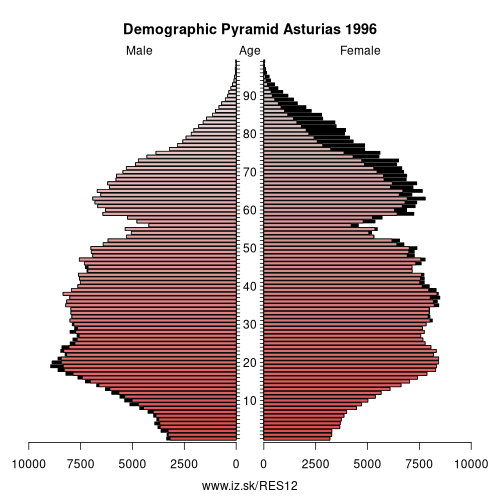
| Indicator | Period | Value |
|---|---|---|
| Demographics | ||
| number of inhabitants | 2024 | 1 009 599 |
| population density | 2023 | 95.4 |
| old-age dependency ratio | 2024 | 45.1 |
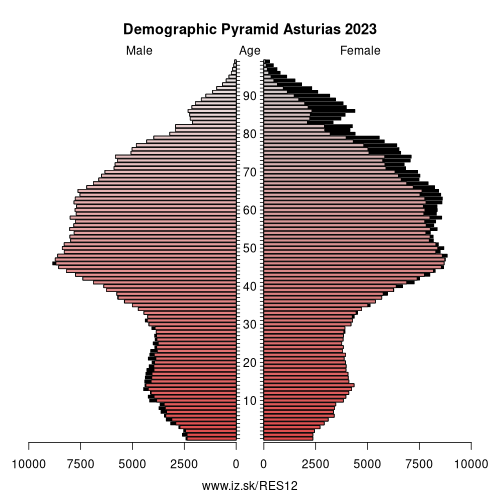
Employment by sectors, Asturias
| NACE r2 | % | NACE r2 | % | ||
|---|---|---|---|---|---|
| A | 13.9 | 3% | B-E | 62.7 | 15% |
| F | 32.6 | 8% | G-I | 115.5 | 28% |
| J | 12.7 | 3% | K | 6.5 | 2% |
| L | 3.7 | 1% | M_N | 35.3 | 9% |
| O-Q | 103.2 | 25% | R-U | 27.6 | 7% |
| TOTAL | 413.6 | 100% |
Data for the period year 2024. Source of the data is Eurostat, table [lfst_r_lfe2en2].
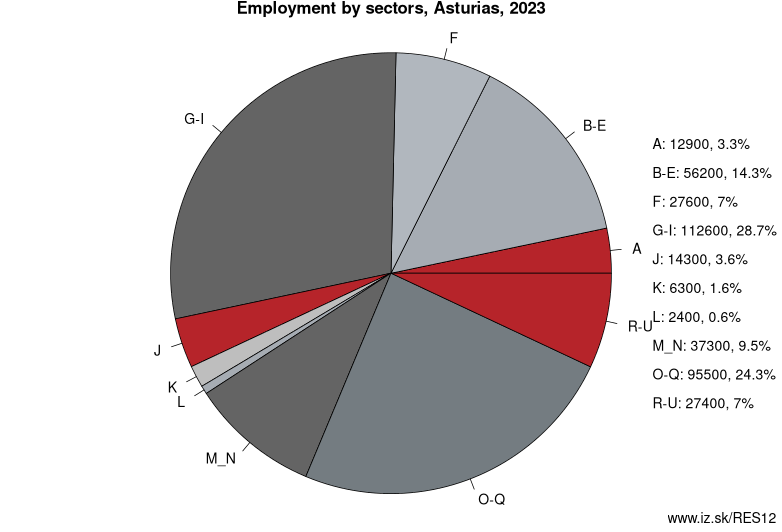
From Wikipedia :
Asturias (, Spanish: [asˈtuɾjas]; Asturian: Asturies [asˈtuɾjes; -ɾjɪs]; Eonaviego: Asturias), officially the Principality of Asturias (Spanish: Principado de Asturias; Asturian: Principáu d'Asturies), is an autonomous community in north-west Spain. It is coextensive with the province of Asturias, and contains some of the territory that was part of the larger Kingdom of Asturias in the Middle Ages. Divided into eight comarcas (counties), the autonomous community of Asturias is bordered by Cantabria to the east, by León (Castile and León) to the south, by Lugo (Galicia) to the west, and by the Bay of Biscay (Cantanbric sea) to the north.The most important cities are the communal capital, Oviedo (Uviéu), the seaport and largest city Gijón (Xixón), and the industrial town of Avilés. Other municipalities in Asturias include Cangas de Onís (Cangues d'Onís), Cangas del Narcea, Gozón, Grado (Grau or Grao), Langreo (Llangréu), Llanera, Laviana (Llaviana), Lena (Ḷḷena), Llanes, Mieres, Siero, Valdés, Vegadeo (A Veiga) and Villaviciosa (see also List of municipalities and comarcas in Asturias).
Asturias is also home of the Princess of Asturias Awards.
History
Asturias was inhabited, first by Homo erectus, then by Neanderthals. Since the Lower Paleolithic era, and during the Upper Paleolithic, Asturias was characterized by cave paintings in the eastern part of the area. In the Mesolithic period, a native culture developed, that of the Asturiense, and later, with the introduction of the Bronze Age, megaliths and tumuli were constructed. In the Iron Age, the territory came under the cultural influence of the Celts; the local Celtic peoples, known as the Astures, were composed of tribes such as the Luggones, the Pesicos, and others, who populated the entire area with castros (fortified hill-towns).
Other: Noroeste, Asturias, Galicia, Cantabria
Neighbours: Galicia, Castile and León, Cantabria
Subregions: Province of Asturias
Suggested citation: Michal Páleník: Europe and its regions in numbers - Asturias – ES12, IZ Bratislava, retrieved from: https://www.iz.sk/PES12, ISBN: 978-80-970204-9-1, DOI:10.5281/zenodo.10200164

 Share
Share Facebook
Facebook Twitter
Twitter News
News